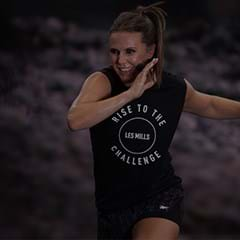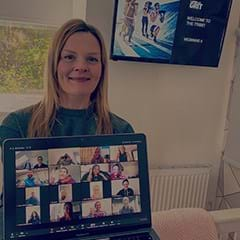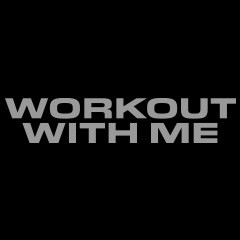KNOW YOUR PURPOSE AND WHAT YOU WANT TO TALK ABOUT
“A lot of people don’t know what they’re trying to achieve with their posts,” says Les Mills’ Head of Social and Content, Chris Asahara. “Whether you’re trying to help people be healthier by sharing recipes, or your outcome is to motivate others to work out, you need to be very clear on what your WHY is on social media. This will then help guide what content you create and what you decide to post.”
Most brands have “content pillars” which dictate the topics they will engage in. Having your own set of topics will help keep you focused and set the expectations of what people will get from following you. And pick just a few. If you choose a lot of subjects, you’ll likely end up saying a little about everything, which really equates to a lot about nothing.
“My brand is about inspiring people through my athleticism,” says Les Mills Ambassador Erin Maw. “I bring out the side of me that loves to train hard and I only post things that feel real and authentic to who I am. For example, I’m not overly sentimental or emotional as a person, so if you’re after hugs you’d better hit up Rach [Newsham] and Caley [Jack]! I’m not going to write long, emotional posts because that wouldn’t be true to who I am. I’m naturally a bit cheeky and direct – so that’s what you’re gonna get on my social media.”
Why are people following you, and what sort of content is going to be valuable to them?
UNDERSTAND YOUR STYLE
Anyone who follows Les Mills Ambassador Marlon Woods on Instagram will understand why he’s a great example of “knowing your style”. Marlon is known for pushing boundaries and he leans into this quality, being very clear in how he positions himself on social media. Define your style and stick to it: if you’re constantly wavering between being silly, inspirational, or voyeuristic then it’s hard to understand who you are. As Chris says, “Consistency in tone and personality builds brand.”
On the flip side, if you’re unsure what your style is, test out different formats and see what works best for you before setting anything in stone. “It’s OK to fail fast,” says Chris. “Find your groove, lean into that groove, and then go big.”
It took Marlon some testing before he found his voice. “I first got Instagram in 2016, and at that stage it was all to promote my gym. I was into bodybuilding and power lifting, so everything I posted was your standard bodybuilder, fit-fam stuff: lifting weights, workouts, come in for a 7-day pass, check out my abs blah blah blah… but it didn’t sit well with me at all. And then as I was teaching I started your standard, here’s a snippet of me teaching this in class, here’s a picture of my clothes… and that didn’t sit well either. Eventually I was like you know what, I’m gonna take social media seriously. What does Marlon enjoy? Who is Marlon?”
KNOW YOUR AUDIENCE
Why are people following you, and what sort of content is going to be valuable to them? If you’re posting a photo of your breakfast, is that going to resonate with your followers? If you’re a nutrition expert then the answer is probably yes. But if nutrition isn’t one of your content pillars, it might be less meaningful for your audience.
If you don’t know what sort of content people want to see, ask them! You can create polls and ask for feedback on what followers want to see more of. Pay attention to the types of questions people ask you – these will provide insight into the types of content your followers want to see more of from you.
“The biggest mistake people make is that they carefully curate their evergreen feed, and then post anything they feel like on their story.”
BE SOCIAL
Respond to questions or comments on your post. “You’re on social media to have a dialogue,” says Chris. “If you’re not interacting with your followers, then you’re just another pretty picture on someone’s feed. If people are connecting with you, they want to know you on a more personal level.”
WHICH PLATFORM IS FOR ME?
There are so many platforms out there and all suit different styles and ways of communicating. The first that come to mind are Instagram, Facebook, Twitter, Snapchat, LinkedIn and TikTok. It can be quite overwhelming to sort through all of them!
Which platform is best for you will come down to your style and how you want to engage with your audience:
Facebook is mainly about your close family/friends/and close community.
Twitter is a rapid fire “always-on” feed of constant interactions.
Instagram is a blend of curated visuals and dialogue.
Snapchat and TikTok are about short, irreverent creativity.
LinkedIn is for professional network connections.
Consider how you want to behave on social media and what will best suit your personality and vibe. Then, focus on just a few platforms. It takes time and dedication to be on social media; it’s therefore better to focus your energy into one or two accounts, rather than spreading yourself too thin across many platforms.
LESS IS MORE
Posting all the time about everything isn’t necessarily the best. “For example, the biggest mistake people make is that they carefully curate their evergreen feed, and then post anything they feel like on their story”, says Chris. “The story function isn’t there as a catch-all for random ruminations – it needs to have some sort of narrative.”
Chris advises, “Ask yourself, what’s my narrative? Pick just one for the day, and figure out how best to deliver that one narrative. Don’t share 40 stories, unless you’re deliberately wanting your account to act as a voyeuristic ‘always-on’ window into your life. Really think about your why and purpose in sharing posts, editing out what isn’t really that important.”
What you leave out is just as important as what you decide to show.
HAVE AN OPINION
Be true to who you are. “If you don’t have a point of view on the world, then you’re just adding to the noise,” says Chris. “If you want to stand out, you need to have an opinion.”
“Finding your voice on social media is similar to finding your voice as an Instructor,” says Creative Director Kylie Gates. “When you first start teaching, you copy your role models, say the things they say, and sound a lot like them. But then, as you grow and build your confidence and know who you are and what you stand for, you can bring your unique voice to your teaching. It’s exactly the same on social media. What I post on my Instagram is an extension of who I am as a person – it’s my voice, my photos, my opportunity to connect with a wider audience and show what I stand for.”








